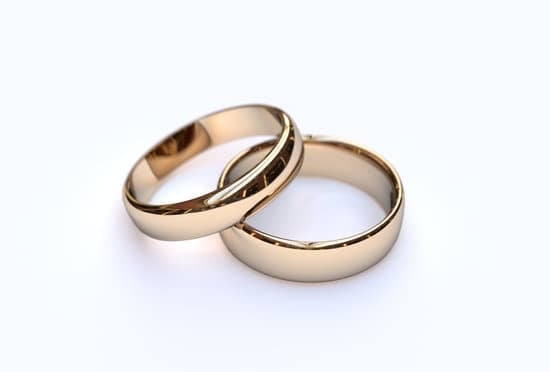What is a shivery after a wedding? This traditional custom holds great significance in various cultures around the world, with deep roots in history and symbolism. From its origins to modern adaptations, the shivery after a wedding plays a meaningful role in the lives of newlywed couples and their communities.
The concept of a shivery after a wedding encompasses a range of customs and traditions that are observed following the marriage ceremony. These rituals often include specific practices that hold symbolic meaning for the couple as they embark on their new life together. The significance of these customs can vary widely across different cultures, reflecting unique beliefs and values.
In this article, we will explore the origins, ritualistic practices, symbolic meanings, and cultural variations of the shivery after a wedding. Additionally, we will delve into personal experiences and stories from individuals who have participated in or witnessed these ceremonies. Through this exploration, we aim to shed light on the enduring relevance and impact of the shivery after a wedding in today’s society. Stay tuned to discover the fascinating world of this timeless tradition.
Origins of the Shivery
The shivery after a wedding is a traditional custom that has been practiced in various cultures around the world. This section will delve into the origins of this ritual, tracing its history and traditional roots. In many societies, the shivery after a wedding has ancient origins that are deeply rooted in cultural and religious beliefs.
One of the earliest known instances of the shivery after a wedding can be traced back to medieval Europe, where it was believed to bring good luck and fertility to the newlywed couple. The practice involved friends and family members making noise by banging pots, pans, and other household items outside the couple’s home, as well as showering them with rice or grain.
This was done to drive away evil spirits and bless the couple with prosperity and happiness in their marriage.
In other cultures such as in India, the shivery after a wedding is known as “Sava Gherva” and has similar traditions of making noise, singing songs, and performing dances outside the newlyweds’ home. The historical significance of this ritual varies across different regions and societies but often revolves around warding off evil spirits and welcoming good fortune for the couple’s future together.
| Shivery After Wedding Rituals | Cultural Origins |
|---|---|
| Banging pots and pans | Europe |
| Singing songs and dancing | India |
The Ritual
The shivery after a wedding is a traditional custom that holds significant importance in many cultures around the world. This ritual, also known as a wedding breakfast, involves close family and friends gathering the morning after the wedding to share a meal and celebrate the newlywed couple. The origins of this tradition can be traced back to ancient times when it was believed to ward off evil spirits and bring good luck to the marriage.
The specifics of the shivery after a wedding can vary widely depending on cultural and regional differences. In some cultures, there are specific foods and drinks that are traditionally served during this gathering, while in others, there may be particular games or activities that are part of the celebration. Additionally, certain rituals such as the breaking of bread or sharing of symbolic items may be included as part of the shivery.
One common thread that runs through most versions of the shivery after a wedding is the emphasis on community and support for the newlyweds. This ritual provides an opportunity for loved ones to come together and offer their blessings, well-wishes, and advice to the couple as they embark on their married life journey. The symbolism of this tradition lies in its representation of unity, love, and ongoing support for the marriage.
| Shivery After a Wedding Traditions | Details |
|---|---|
| Foods | Specific foods and drinks served traditional for this celebration |
| Rituals | Breaking bread or sharing symbolic items |
| Symbolism | Unity, love, and ongoing support for the marriage represented in this tradition |
Symbolism
The shivery after a wedding holds great symbolic meaning in many cultures and plays a significant role in the newlywed couple’s life. This ritual is often filled with traditions and customs that are meant to bring good luck, prosperity, and happiness to the couple as they embark on their new journey together. The symbolic elements of the shivery after a wedding vary across different cultural contexts but often revolve around themes of unity, fertility, and protection.
Some common symbolic elements of the shivery after a wedding include:
- Breaking bread or sharing a meal: This act symbolizes the unity and shared sustenance of the couple as they begin their married life together.
- Lighting candles or lanterns: Symbolizing light in the darkness, this ritual signifies hope, guidance, and prosperity for the newlyweds.
- Tying knots or ribbons: This practice represents the binding of two lives together and can also symbolize fertility and abundance in marriage.
In many cultures, these symbolic acts are believed to ensure a prosperous and harmonious marriage for the couple. The shivery after a wedding is not only a celebration of love but also a commitment to uphold tradition and honor the bond between spouses. It serves as a reminder of the enduring strength and symbolism of marriage in society today.
The symbolic meaning behind the shivery after a wedding extends beyond just the day of the celebration itself; it carries over into the couple’s everyday life. Many couples hold onto these rituals as reminders of their vows, promising to support each other through both joyous and challenging times. The symbolism behind these practices remains deeply ingrained in various cultures, serving as an important reminder of the commitment and dedication required for a successful marriage.
Modern Adaptations
In modern times, the shivery after a wedding has evolved and adapted to reflect changing cultural norms and values. While the traditional shivery was once a strictly defined set of customs and rituals, contemporary weddings have seen a shift towards more personalized and unique experiences for the newlywed couple and their guests. Here are some modern adaptations of the shivery after a wedding:
- Personalized Activities: Instead of following traditional practices, many couples now choose to incorporate activities that hold personal significance to them. This could include shared hobbies, favorite foods, or special places that hold meaning for the couple.
- Technology Integration: With the rise of social media and digital communication, modern shiveries often include elements such as live streaming for friends and family who cannot attend in person. Couples may also create custom hashtags for their wedding events, allowing guests to easily share their experiences on social media platforms.
- Inclusive Celebrations: Modern shiveries often emphasize inclusivity and diversity, welcoming guests from all backgrounds and traditions. This can be seen in the incorporation of multicultural elements, such as music, dance, and cuisine from various cultural backgrounds.
These modern adaptations reflect a shift towards more personalized and inclusive wedding celebrations. By embracing contemporary values and incorporating individualized expressions of love and commitment, the shivery after a wedding continues to hold significance in today’s society.
Undoubtedly, these modern adaptations have expanded the possibilities for how couples can celebrate their union with loved ones. As weddings continue to evolve with changing societal norms and technological advancements, it is clear that the concept of a shivery after a wedding will persist as an enduring symbol of love, commitment, and community.
Cultural Variations
Asian Cultures
In many Asian cultures, the shivery after a wedding takes on various forms, each with its own unique customs and rituals. For example, in Chinese traditions, the “yuepao” or “fetching the bride” ceremony involves the groom and his groomsmen navigating a series of challenges set up by the bridesmaids in order to prove his love and commitment to his bride.
In Indian weddings, the “joota chupai” ritual sees the bride’s sisters and friends playfully steal and hide the groom’s shoes, only returning them in exchange for a monetary gift.
European Traditions
In Europe, there are also diverse interpretations of the shivery after a wedding. In Italy, it is customary for guests to throw rice or candy at the newlyweds as they exit the church or venue, symbolizing prosperity and sweetness in their marriage. In some Eastern European countries like Poland and Ukraine, it is common for guests to participate in a playful “kidnapping” of the bride during the reception, requiring ransom from the groom in order to have her returned.
African Customs
African cultures also have their own distinct versions of the shivery after a wedding. In South Africa, Zulu weddings often feature traditional dances such as “Umgcabo,” where family members compete with each other through dance performances. The winning group receives gifts from the opposite side as a way of celebrating unity between families.
Understanding these cultural variations showcases just how diverse and rich wedding traditions can be around the world. Each tradition holds special significance within its respective culture and adds depth and meaning to the celebration of love and marriage.
Personal Experiences
I remember attending my cousin’s wedding a few years ago, and the highlight of the event was the shivery that took place afterward. The excitement and anticipation in the air were palpable as we gathered in a large hall to witness this traditional post-wedding ritual. As the newlywed couple made their way into the room, they were greeted with cheers and applause, setting the stage for an unforgettable experience.
Memorable Traditions
The shivery began with the couple being seated on two elaborately decorated chairs, with family members and close friends surrounding them. One by one, guests would approach the couple, offering them words of wisdom, blessings, and sometimes even humorous or lighthearted advice. It was heartwarming to see people from different generations and walks of life coming together to show their love and support for the newlyweds.
Emotional Moments
What struck me most about the shivery was the genuine emotions that were displayed by everyone involved. From tears of joy to bursts of laughter, it was a rollercoaster of emotions that truly encapsulated the significance of this age-old tradition. Witnessing this special moment made me appreciate the cultural richness and depth that comes with such rituals.
Impact on Relationships
As I reflect on that experience, I realize that the shivery after a wedding is not just a formality but a profound expression of community and connection. It serves as a reminder that relationships are at the core of our lives and deserve to be celebrated in meaningful ways. Overall, participating in or witnessing a shivery after a wedding can have a lasting impact on individuals and their perspectives on love, marriage, and unity.
Conclusion
In conclusion, the shivery after a wedding holds a special significance in various cultures around the world. Whether it is known as a “shivaree” in the United States or “charivari” in France, the tradition of celebrating newlyweds with loud, joyful noise and sometimes playful pranks has deep historical roots. This ritual symbolizes community support for the newlywed couple and is considered an auspicious way to ward off evil spirits and bring good fortune to the marriage.
The shivery after a wedding has evolved over time, adapting to modern customs and practices. In contemporary weddings, this tradition may take on new forms that align with the preferences of the couple and their cultural background. Despite these adaptations, the symbolic meaning behind the shivery remains unchanged – it signifies love, support, and well-wishes for the couple’s future together.
Ultimately, the enduring relevance of the shivery after a wedding lies in its ability to bring people together in celebration of love. Regardless of cultural variations and personal experiences, this tradition continues to be cherished by many as a meaningful way to mark the beginning of a new chapter in a couple’s life.
As we look towards the future, it is clear that the spirit of community and joy represented by the shivery after a wedding will continue to resonate with people from all walks of life.
Frequently Asked Questions
Do People Still Do a Shivaree?
Shivarees, also known as charivaris, were once a common practice in rural communities to celebrate a wedding by serenading the newlyweds with noise and music. While this tradition has declined, some communities still uphold this custom.
What Is a Shivery Party?
A shivery party is a traditional Amish celebration held for newlywed couples where the community gathers to shower them with practical household gifts. It’s a way for the community to support the new couple as they begin their life together.
What Is the Amish Wedding Night Consummation?
In Amish culture, the wedding night consummation is a private and intimate moment between the newlyweds. This act is significant as it marks the beginning of physical intimacy within marriage, which is highly valued in Amish beliefs and traditions.

I have been involved in marriages for over 20 years helping couples and singles understand more about them.





